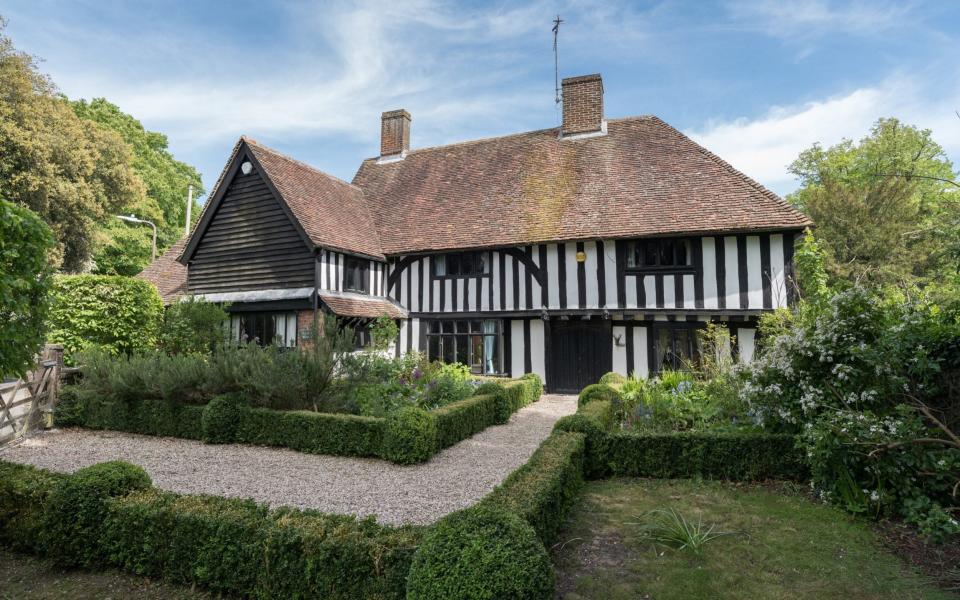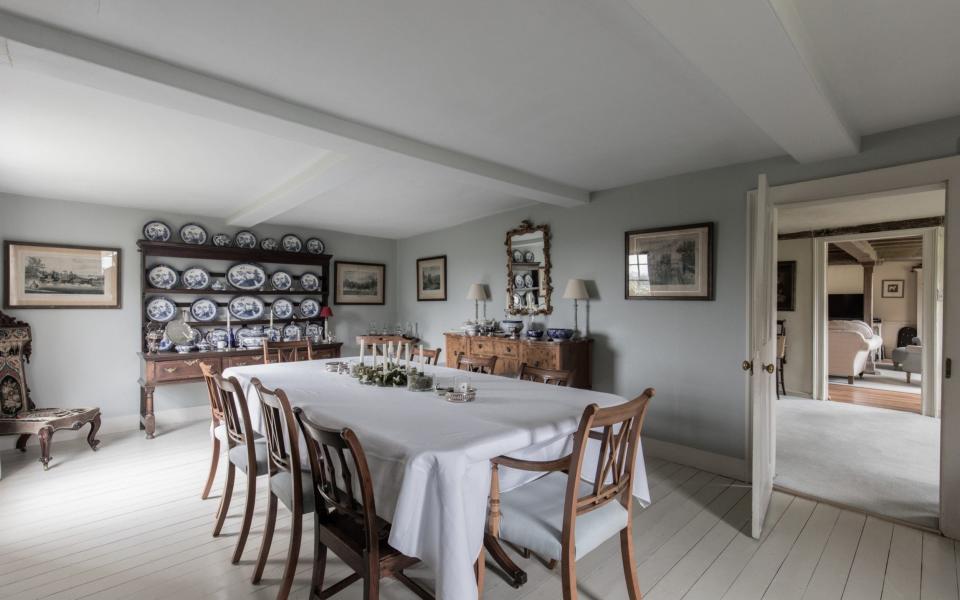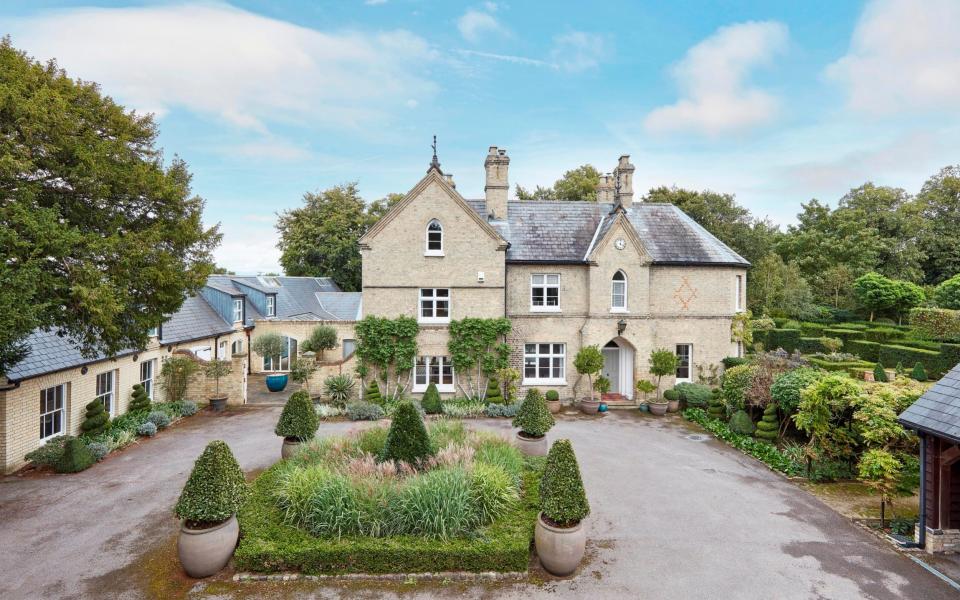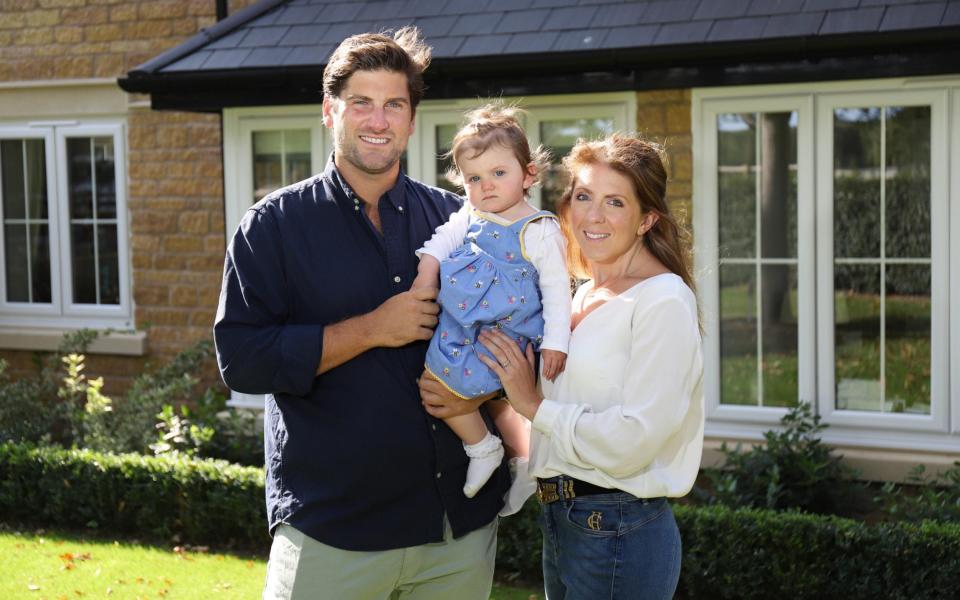The property hotspots that are booming because Covid completely changed what buyers want

The property market of 2020 has been like no other. Far from crashing, as predicted by many, it has been ignited by a wave of pent-up demand driven by people desperate to move house after the national lockdown.
A re-evaluation of how and where we want to live has resulted in the busiest July and August seen for several years. The nine-month stamp duty holiday on the first £500,000 of any purchase has also played its part.
Across the UK, agreed sales for the two months up to mid-September are up 58 per cent on the same period last year.
What’s more, our desire for green space and larger homes means that we are seeing a major exodus from London, and for the first time the capital’s property market is not leading the recovery.
According to the agent Savills, using data from TwentyCi, the strongest demand has generally been through London’s commuter zone and some more rural lifestyle relocation markets. The East and the South East regions have seen the strongest surge in agreed sales, up 78 and 73 per cent respectively on the same eight-week period last year. So what are the current property hotspots across the UK?

London commuter belt
The main beneficiary of London-based buyers looking to escape the capital has been the South East, according to Knight Frank Research: while 17 per cent of London-buyers were looking there before lockdown, 34 per cent have been doing so since. Guildford, Sevenoaks, Tunbridge Wells, Henley-on-Thames and Esher have been the five most active areas for sales by these buyers.
Schools are a big driver in all of these, especially the market town of Guildford, surrounded by the Surrey Hills. The stereotypical buyer is from south-west London or Islington, has 2.2 children and is spending £1.2-£1.95 million on a property, says Alastair Mercer, of Savills.
“Anywhere a short drive or cycle from the station [35 minutes into Waterloo] is popular, plus also Haslemere and Hindhead, or the villages south of the town: Wonersh, Shamley Green, Bramley and Godalming, handy for Charterhouse School,” he adds.

Great schools are also part of the pull of the former spa town of Tunbridge Wells in Kent, which is currently also attracting buyers out of Islington as well as Dulwich and Blackheath in south-east London.
“They might have been attracted by Sevenoaks (35-47 minutes by train into Charing Cross) but now they commute less often, an hour from Tunbridge Wells is OK, with its jazz evenings and café culture,” says Andrew Farmer, of Hamptons International. The outlying villages of Mayfield, Wadhurst, Speldhurst and Groombridge are also popular.
Also in Kent, villages around Ashford International are popular for the high-speed train links, especially those between Ashford and Canterbury: villages at the foot of the Kent Downs such as Wye and Brook. In Brook, Strutt & Parker is selling a three-bedroom farmhouse and barn conversion on eight acres for £1.3 million.
“West of Ashford, Great Chart, Pluckley, Bethesden are sought after,” says Simon Backhouse, of Strutt & Parker. “But Deal, on the coast, has also been in demand with arty types and creative sector buyers who can work remotely.”

Extended commutes
The pandemic has opened our eyes to a longer commute – especially when it’s only once or twice a week, with more of us planning to work from home in the long term. Recent research by the agent Jackson-Stops suggested that eight in 10 homeowners would now be prepared to extend their commute by at least 30 minutes – with 19 per cent tolerating an extra hour.
According to Hamptons International, the “longer commute” locations (1 hr 30 mins+) that have registered the largest increases for London-based buyers this summer are Rother (East Sussex), up 16 per cent year-on-year, Eastleigh (close to Southampton, up 13 per cent), and Charnwood (around Loughborough, up 9 per cent).

Also high on the list (up 7 per cent) is Babergh, a stretch of mid-Suffolk that includes the beautiful preserved “Constable Country” villages of Dedham Vale, and Lavenham with its half-timbered medieval houses.
Ipswich’s schools are a big draw for London families seeking a bigger property, with a weekly commute into Liverpool Street (around 1 hr 15 mins) or from Manningtree (1 hr 10 mins). “Commuter tolerance has stretched to include the villages of Chelsworth, Brent Eleigh and Hadleigh,” says Jonathan Penn, of Jackson-Stops Ipswich. In East Bergholt, the agent is selling a nine-bedroom, Grade II listed Queen Anne rectory for £2,850,000.
Chichester in West Sussex (a 95-minute commute) is also being sought by more Londoners than a year ago, with the part-time commuters embracing sailing clubs or surfing. “Buyers either want to live near the harbour, the beach or the South Downs,” says Mark Astley, of Jackson-Stops.

“West Wittering is very popular – we just exchanged on a four-bed house for £835,000, and also sold a tired six-bed house with planning consent to extend, for £2.5 million,” he says, with agency viewings at over 400 a month. The house-builder Redrow is selling new three-bedroom properties close to the harbour for £349,950 (redrow.co.uk).
East Hertfordshire and East Cambridgeshire are also hotspots, according to Savills, with the latter helped by the opening of Cambridge North railway station in 2017 (1 hr 17 mins to London).
“Pre-Covid, people looked to buy within the M11 corridor, close to faster connections to London, but now working from home is the new normal, there are more buyers from Walthamstow or south-east London trading up from a £1 million terraced house to, for example, a Georgian rectory, which I sold recently to a family for £1.5 million,” says Richard Freshwater, of Cheffins.

The hotspot villages are Fulbourn, Balsham, the Wilbrahams, Six Mile Bottom, and Lode to the west of Newmarket. In Fulbourn, a three-bedroom house costs from £450,000. In Lode, the agent is selling a pretty six-bedroom Victorian vicarage for £1.7 million.
Families anticipating the next lockdown are also behind an increase in agreed sales of 182 per cent in the Cotswolds, according to Savills. They are mostly cash buyers from London, says Elizabeth D’Allemagne, of Butler Sherborn.
“But there are also second-home buyers hedging against inflation in a recession and young couples wanting to work from home,” she adds. “Easy access to villages, good pubs, train stations, the M40 and M4 are very important.” In Chedworth, South Gloucestershire, the agent is selling a beautiful six-bedroom Georgian house for £1.85 million.

Rural hotspots
An escape from the South East generally provides better value for money, and for some buyers, the more remote, the better. The Savills/TwentyCi data identified the most in-demand locations outside of the East of England and the South East, and top of the list is Aberdeenshire (up 281 per cent), followed by the South Hams in Devon (up 209 per cent) and Ryedale in Yorkshire (up 205 per cent).
So why Aberdeenshire? It’s been due a revival since the 2014 oil crisis hit its economy hard. “Property is now much more affordable and brought in a whole new raft of buyers seeking a home in rural Scotland,” says Hamish Spencer-Nairn, of Strutt & Parker. “They are spending anything from £300,000 for a nice cottage to £750,000 for a larger property.”

Home to the Cairngorms National Park, Balmoral and the tumbling rivers and craggy moors of Royal Deeside, the area appeals to mountain bikers and hillwalkers but it’s also got a vibrant city, Aberdeen, offering good schools, an airport and other amenities.
Popular Scottish seaside hot spots include Troon in Ayrshire, the tiny harbours of Pittenweem and East Neuk of Fife, and Stirlingshire, where a four-bedroom property in Blanefield, with views of Carbeth Loch, and priced at £425,000, has had 45 viewings (prime location.com).
According to Cameron Ewer, head of Savills Scotland: “Between May and June, we saw a 70 per cent increase in buyers from South East England. The sweet spot price range is £400,000 to £600,000.”

The shift from city to village life is evident in North Yorkshire’s Ryedale – including the North York Moors and Howardian Hills. Some buyers will commute into Leeds, York or Harrogate. “In Helmsley [a charming market town] a period two-bedroom terrace on at £300,000, and also a six-bed home for £1 million in Nunnington both went for over the asking price recently,” says William Butler, of Carter Jonas.
Flexible working has pushed buyers further west for better value, especially in Cornwall, a county that’s been enjoying a staycation boom.
“With [regular] travel less a priority, more home hunters are looking west of Falmouth than before,” says Jonathan Cunliffe, an agent. “You can live close to both north and south coast, close to Truro if senior schools are important, and pay between £1 million and £1.125 million for a four/five-bedroom family home with a view.”
But remote working in a remote location is sought by others, such as a software writer from London who bought a farmhouse in the foothills of Bodmin Moor for £800,000, according to Scott Parry, of the eponymous agency in south-east Cornwall. “Big hotspots for second-home buyers in the past six months are Looe, Seaton, Downderry and Cawsand,” he says. Prices start at around £300,000 – for a clifftop cabin on Whitsand Bay.

Another trend in the South West is holiday-home owners upsizing to full-time homes, and the empty lanes, coastal footpaths and bucolic creeks of the South Hams in Devon have been “incredibly” busy this summer, says Prunella Martin, of Marchand Petit. “Around £800,0000 to £1.5 million is the typical budget for a Londoner seeking a pretty farmhouse or barn conversion,” she adds.
Along with the big-name honeypots of Salcombe and Dartmouth, she picks out Newton Ferrers as a great little village on a creek of the River Yealm estuary, the coastal hamlet of Thurlestone (close to Kingsbridge, good for schooling) and the River Dart villages of Dittisham and Kingswear.
In the Savills’ data, Ceredigion is the highest-performing Welsh location, with agreed sales up 181 per cent on last year. “I’ve never been so busy, with 70-80 per cent of buyers from outside of Wales,” says Dan Rees, of Savills.
Buyers are spending £400,000 to £700,000, with demand for the Georgian harbour town of Aberaeron, on Cardigan Bay, New Quay with its wide sandy beaches, and Cardigan, a historic town that’s had a facelift. “This area [Cardiganshire] used to be overshadowed by Pembrokeshire, but that is changing,” he says.

 Yahoo News
Yahoo News 
